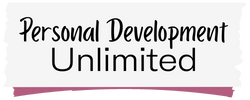Effective communication growth relies on mastering the art of active listening. It goes beyond simply hearing and requires comprehension, retention, and appropriate response. When you actively listen, you not only understand the words being spoken but also consider potential barriers such as language differences or cultural nuances.
To truly engage in active listening, you must overcome cognitive biases and conversational narcissism. It’s about focusing on the intent of the conversation and paying attention to both verbal and non-verbal cues. Non-verbal cues, such as body language, provide valuable insights into the speaker’s emotions and intentions.
Table of Contents
Key Takeaways
- Active listening involves comprehension, retention, and appropriate response
- Overcoming cognitive biases and conversational narcissism is crucial for effective active listening
- Non-verbal cues, including body language, contribute to a deeper understanding
- Active listening techniques include clarifying, paraphrasing, asking questions, and refraining from judgment
- Developing active listening skills leads to personal and professional growth
Understanding Active Listening
Active listening encompasses mindful, empathetic, and attentive listening, allowing for deeper understanding and connection. It goes beyond simply hearing the words spoken and involves actively engaging with the speaker to comprehend their message, retain key information, and respond appropriately.
When practicing active listening, it is important to overcome cognitive biases and conversational narcissism. By setting aside preconceived notions and personal agendas, you create a safe space for open communication and demonstrate genuine interest in the speaker’s perspective.
One effective technique for active listening is mindful listening. This involves being fully present in the conversation, free from distractions, and giving your undivided attention to the speaker. Mindful listening allows you to observe not only the words being spoken but also the speaker’s body language and tone of voice, providing valuable insights into their emotions and intentions.

| Technique | Description |
|---|---|
| Clarifying | Asking for clarification or elaboration when you need more information to fully understand the speaker’s message. |
| Paraphrasing | Restating the speaker’s words in your own words to confirm understanding and show empathy. |
| Asking Questions | Posing thoughtful questions to gain deeper insights into the speaker’s thoughts, feelings, and motivations. |
“Active listening is a powerful tool that not only helps you build stronger relationships but also fosters personal and professional growth. By truly understanding others, you can navigate conflicts, drive effective communication, and create meaningful connections.”
The Importance of Non-Verbal Communication
Non-verbal cues, such as body language and facial expressions, play a crucial role in active listening. They provide additional information beyond words and help you interpret the speaker’s emotions and intent. Paying attention to non-verbal cues allows for a deeper level of understanding and empathy.
- Observe the speaker’s posture, gestures, and facial expressions. Are they relaxed or tense? Is their body language open or closed?
- Notice their tone of voice and volume. Do they sound confident or hesitant? Are they expressing excitement or frustration?
- Consider the context and environment. Are there any environmental factors that may influence the speaker’s demeanor or affect their message?
By actively listening to both verbal and non-verbal cues, you can cultivate stronger connections, build trust, and navigate misunderstandings more effectively.
Remember, active listening is a skill that can be developed with practice and intention. By mastering active listening techniques and honing your understanding of non-verbal communication, you can enhance your communication skills, foster personal and professional growth, and create meaningful connections with others.
Components of Active Listening
Active listening involves actively engaging and participating in the conversation while being attentive to non-verbal cues and providing verbal encouragement. To truly comprehend and retain information, active listeners focus on the intent behind the communication and pay attention to both verbal and non-verbal cues.
When engaging in active listening, it is essential to actively participate in the conversation. This means giving your full attention to the speaker and demonstrating your engagement through verbal and non-verbal cues. Nodding in agreement, maintaining eye contact, and using facial expressions to show interest are some ways to actively participate in the conversation.
Additionally, active listeners pay close attention to the non-verbal cues exhibited by the speaker. Body language, facial expressions, and tone of voice can convey emotions and additional meaning. By being attentive to these cues, active listeners gain a deeper understanding of the speaker’s message and can respond in a more meaningful way.
Table: Active Listening Techniques
| Active Listening Technique | Description |
|---|---|
| Clarifying | Asking for clarification when something is unclear to ensure a clear understanding of the message. |
| Paraphrasing | Restating the speaker’s message in your own words to show comprehension and provide feedback. |
| Asking questions | Posing relevant questions to gather more information and encourage further conversation. |
Active listeners also refrain from passing judgment during the conversation. By setting aside personal biases or preconceptions, active listeners create a safe and non-judgmental space for open communication. This fosters trust and allows for a more honest and productive exchange of ideas.
Overall, active listening involves a combination of active engagement, active participation, and attentiveness to non-verbal cues. It requires effort and practice, but the benefits are worth it. By developing strong listening skills, individuals can enhance their personal and professional growth, improve their relationships, gain a deeper understanding of perspectives, and contribute to conflict resolution.

Effective active listening techniques include clarifying and paraphrasing information, asking questions, and withholding judgment. When clarifying information, you seek to ensure a clear understanding of what the speaker is trying to convey. You can ask for further details or examples to eliminate any ambiguity.
Paraphrasing, on the other hand, involves restating the speaker’s message in your own words to demonstrate comprehension. This technique not only reinforces your understanding but also allows the speaker to confirm or correct any misinterpretations.
Asking questions is another crucial active listening technique. By asking relevant questions, you encourage the speaker to provide more information and express themselves further. This demonstrates your genuine interest and encourages a deeper level of engagement.
It also helps to clarify any points that may be unclear or need additional explanation. However, it’s important to note that effective questioning should be open-ended, avoiding leading or judgmental language.
| Active Listening Techniques | Benefits |
|---|---|
| Clarifying | Ensures clear understanding |
| Paraphrasing | Demonstrates comprehension and allows for confirmation or correction |
| Asking Questions | Encourages further information and deeper engagement |
Remember, active listening is not about waiting for your turn to speak, but rather about truly understanding and engaging with the speaker’s message. Practice clarifying, paraphrasing, and asking open-ended questions to enhance your active listening skills and build stronger connections with others.
Withholding Judgment for Effective Communication
One of the key aspects of active listening is withholding judgment. When you refrain from passing judgment, you create a safe space for open and honest communication. This allows the speaker to share their thoughts and feelings without fear of criticism or rejection. By suspending judgment, you demonstrate empathy and respect, fostering trust and deeper connections.
By practicing these active listening techniques, you can improve your communication skills and nurture meaningful relationships. The ability to clarify, paraphrase, and ask questions enables you to understand others better, resolve conflicts, and collaborate effectively. Remember, effective active listening is a skill that can be developed with practice and conscious effort.
Effective active listening techniques summarized:
- Clarifying: Ensuring clear understanding of the speaker’s message.
- Paraphrasing: Restating the speaker’s message in your own words to demonstrate comprehension.
- Asking Questions: Encouraging further information and deeper engagement through open-ended questions.
Remember, practice these techniques to become a master of active listening and experience the benefits of improved communication, stronger relationships, and personal growth.

Non-verbal communication, specifically body language, plays a crucial role in active listening, providing additional context and understanding. When engaged in a conversation, it’s important to pay attention not only to what the speaker is saying verbally but also to their facial expressions, gestures, and posture.
These non-verbal cues can offer valuable insights into the speaker’s emotions, intentions, and level of engagement. By being observant of body language, you can gain a deeper understanding of the speaker’s message and respond more effectively.
“The most important thing in communication is hearing what isn’t said.” – Peter Drucker
Recognizing and interpreting non-verbal cues requires a certain level of attentiveness and mindfulness. It involves being fully present in the conversation and actively observing the speaker’s movements and expressions.
For example, if someone is speaking to you with crossed arms and a furrowed brow, it may indicate that they are defensive or closed off. On the other hand, open body language, such as uncrossed arms and maintaining eye contact, suggests a willingness to engage and an open mindset.
One effective way to enhance your active listening skills is to practice mirroring. Mirroring involves subtly imitating the speaker’s body language and facial expressions, which can help establish rapport and create a sense of connection.
However, it’s important to use mirroring tactfully and with genuine intent, as excessive or obvious mirroring can come across as insincere or mocking.
Table 1: Common Body Language Cues and Their Interpretations
| Body Language Cue | Interpretation |
|---|---|
| Eye contact | Engagement, interest, and attentiveness |
| Facial expressions | Emotions and reactions |
| Posture | Openness or defensiveness |
| Gestures | Emphasis, clarification, or discomfort |
| Proximity | Comfort level and willingness to connect |
Incorporating active observation of body language into your listening practice allows you to gain deeper insights and create a more engaging and meaningful conversation. By being attuned to non-verbal cues, you become a more mindful and empathetic listener, fostering better understanding and connection in your interactions.

Retaining information during active listening enables a thoughtful and meaningful response, fostering effective communication. When you actively engage in listening, it shows your commitment to understanding and valuing the speaker’s perspective.
By paying attention to the details and nuances of the conversation, you can retain key information that allows for a more thoughtful and relevant response. This not only enhances your comprehension of the message but also creates a connection and sense of validation for the speaker.
In active listening, one technique to retain information is to summarize and reflect on what you have heard. This involves paraphrasing the speaker’s words and reflecting them back to ensure mutual understanding.
It shows your attentiveness and allows for clarification if needed. Additionally, asking relevant questions based on the information you have retained demonstrates your engagement and deepens the conversation.
Non-verbal cues also play a crucial role in retaining information. By actively observing the speaker’s body language, facial expressions, and gestures, you can gain valuable insights into their emotions and intentions.
This helps you understand the underlying meaning beyond the words spoken and allows for a more authentic and empathetic response. Remember that active listening is not just about the words being said but also about the unsaid.
Benefits of Retaining Information and Meaningful Response
- Builds trust and rapport: When you retain information and respond meaningfully, it shows respect and validation for the speaker. This fosters trust and strengthens the relationship between you and the speaker.
- Promotes deeper understanding: Retaining information allows you to grasp the speaker’s perspective fully. This deeper understanding facilitates more meaningful conversations and helps bridge gaps in communication.
- Fosters effective problem-solving: By actively listening and retaining information, you can identify the underlying issues and concerns. This enables you to provide relevant and thoughtful solutions, leading to effective problem-solving.
Remember, active listening is a skill that can be developed with practice. By consciously focusing on retaining information and responding meaningfully, you can enhance your communication abilities, build stronger connections, and foster personal and professional growth.

Active listening plays a crucial role in conflict resolution, fostering empathy and understanding for effective problem-solving. When conflicts arise, it is essential to engage in active listening to truly grasp the perspectives and concerns of all parties involved.
By attentively listening and empathizing with others, you create a safe space for open communication and collaboration.
During conflict resolution, active listening involves more than just hearing the words being spoken. It requires paying attention to the speaker’s body language, tone of voice, and emotions, which can provide valuable insights into their underlying feelings and needs.
By actively listening and acknowledging these non-verbal cues, you demonstrate empathy and show that you genuinely care about finding a resolution.
Furthermore, active listening enables you to ask relevant questions and seek clarification to ensure a thorough understanding of each party’s perspective. By refraining from passing judgment and actively seeking to understand, you create an environment that promotes trust and encourages open dialogue.
This allows for a more comprehensive exploration of the underlying issues and paves the way for mutually beneficial solutions.
Benefits of Active Listening in Conflict Resolution
- Facilitates empathy and understanding
- Promotes open communication
- Encourages collaborative problem-solving
- Builds trust and rapport
Active listening is a powerful tool that can transform conflicts into opportunities for growth and understanding. By cultivating active listening skills, you empower yourself to navigate conflicts with grace and compassion, fostering harmonious relationships and productive resolutions.
Remember, conflict resolution is not about winning or losing; it’s about finding common ground and creating win-win solutions.
Through active listening, you can bridge the gap between differing perspectives, build consensus, and promote healthy communication. Embrace the power of active listening and watch as conflicts transform into opportunities for personal and professional growth.
Personal and Professional Growth through Active Listening
Active listening is a catalyst for personal and professional growth, enriching relationships and broadening perspectives. When you actively listen to others, you create a space for deeper understanding and connection. By focusing on the speaker’s words, body language, and emotions, you gain valuable insights into their thoughts and experiences. This allows you to develop empathy and foster better relationships, both personally and in the workplace.
Understanding different perspectives is essential for personal and professional growth. Active listening helps you break free from your own biases and assumptions, opening your mind to new ideas and possibilities. When you truly listen to others, you gain a deeper understanding of their needs, concerns, and aspirations. This knowledge can enhance your decision-making abilities, as well as your ability to collaborate effectively with others.
| Benefits of Active Listening for Personal and Professional Growth |
|---|
| Enhanced communication skills |
| Improved problem-solving abilities |
| Heightened empathy and emotional intelligence |
| Stronger relationships and trust |
| Increased creativity and innovation |
| Effective conflict resolution |
Active listening is not just about hearing words; it is about truly understanding and connecting with others. It requires you to be fully present in the conversation, actively engaging and participating. As you develop your active listening skills, you will find that meaningful and authentic interactions become the foundation for personal and professional growth.
By practicing active listening, you demonstrate respect and value for others’ opinions, creating an environment of trust and collaboration. This, in turn, leads to increased job satisfaction and productivity. Active listening also plays a crucial role in conflict resolution, allowing for better understanding and respectful communication.
When you actively listen, you prioritize finding common ground and reaching mutually beneficial solutions.
Remember, active listening is a continuous journey of growth and self-improvement. It requires practice, patience, and a genuine desire to understand and connect with others. Embrace the power of active listening, and watch as it transforms your personal and professional life.

Embracing active listening as a fundamental skill can unlock the doors to effective communication and endless personal and professional growth. Mastering active listening goes beyond the act of hearing; it requires active comprehension, retention, and appropriate response.
By understanding what the other person is saying, considering potential language barriers or cultural differences, and actively processing information, you can deepen your understanding and form meaningful responses.
Overcoming cognitive biases and conversational narcissism is also crucial in active listening. By setting aside preconceived notions and ego-driven tendencies, you can truly focus on the intent of the conversation and create a safe space for open communication.
Active listening techniques, such as paying attention to body language, giving encouraging verbal cues, and clarifying and paraphrasing information, further enhance your ability to connect authentically and gain valuable insights into the speaker’s emotions and intentions.
Active listening skills have a profound impact on personal and professional growth. They allow for better relationships by fostering empathy and understanding diverse perspectives.
By actively listening, you can navigate conflicts more effectively, finding common ground and facilitating resolution. With active listening, you can unlock the full potential of your communication skills and create a positive ripple effect in all areas of your life.
FAQ
What is active listening?
Active listening is a communication skill that goes beyond simply hearing. It involves comprehending, retaining, and responding appropriately to what the other person is saying.
Why is active listening important?
Active listening is essential for effective communication growth. It helps overcome barriers, understand diverse perspectives, and facilitates conflict resolution.
What are the components of active listening?
The components of active listening include actively engaging in the conversation, participating fully, focusing on the intent behind the communication, and paying attention to non-verbal cues.
What techniques can enhance active listening?
Techniques such as clarifying and paraphrasing information, asking relevant questions, and refraining from passing judgment can enhance active listening.
How does non-verbal communication relate to active listening?
Non-verbal communication, such as body language, provides valuable insights into the speaker’s emotions and intentions, contributing to a deeper level of understanding in active listening.
How does active listening contribute to conflict resolution?
Active listening facilitates conflict resolution by helping individuals understand others’ perspectives and concerns, building empathy, and finding common ground for productive resolution.
How can active listening contribute to personal and professional growth?
Active listening fosters better relationships, deepens understanding of different perspectives, and enhances overall communication skills, leading to personal and professional growth.
What are the benefits of mastering active listening?
Mastering active listening enables individuals to overcome barriers, be attentive to non-verbal cues, engage in meaningful conversations, and experience personal and professional growth.
Source Links
- https://www.coursera.org/articles/active-listening
- https://fs.blog/active-listening/
- https://cubo.to/blog/master-communication-skills-for-personal-and-professional-growth/
Personal Development Unlimited is your go-to place to be You, Without Limits. We bring together personal development and self-improvement articles, books, courses and videos in one place. Find your self-growth opportunities easily.
Comments
0 comments



